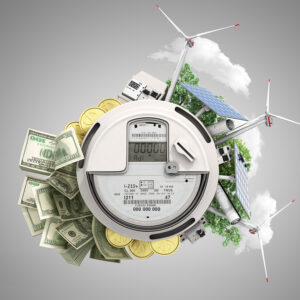With temperatures worldwide breaking records, there is an escalating sense of urgency that countries must make bigger, bolder and more enforceable commitments to cut greenhouse gas emissions.
But it would be a terrible mistake to double down on the current “kitchen sink” approach of trying to do everything, everywhere, all at once because we can’t force a green transition with regulatory mandates, subsidies and generalized moral pressure. That impulse isn’t wrong; it just won’t work.
The harsh reality is that until clean energy is as cheap and performs as well as dirty energy, the world will not adopt it at anything like the needed scale. So, governments must focus on developing clean energy sources at price and performance parity with dirty fuels — “P3.” Only then will governments, organizations and individuals rapidly switch to a new energy system.
Why won’t forcing approaches work? There are two primary reasons.
First, climate change is a global issue, so solutions must be global. In particular, clean-energy solutions must meet the needs of lower-income countries, where energy demand is rising fast and where there is little to no ability or willingness to pay a green premium. Ending emissions in wealthy countries — unlikely if we don’t reach P3 — will not solve the problem if the developing world cannot follow suit.
Second, the green transition will require a global shift of energy production, distribution and use across all industries. The estimated capital expenditures needed by 2050 range from $84 trillion to $275 trillion — and that does not include the higher operating costs of existing clean technologies. Governments — especially in low-income countries — cannot afford to pay that bill.
Unfortunately, many clean-energy solutions miss the global point. For example, the U.S. government offers $7,500 in federal electric vehicle subsidies (11 percent of the median U.S. income). The same subsidy in India would cost almost 350 percent of household income, which is not affordable. And that’s just for EVs. The problem repeats itself, sector by sector, across the entire economy. So, until clean energy solutions achieve P3 for all those industrial and end-user purposes, the global effect of discrete actions in a few wealthy nations will be insufficient.
We do not have the clean technologies we need to get near net-zero emissions without paying a significant price premium. Wind and solar are low-cost energy sources in some places, for some times of the day (and year), at the point of production. But what matters is the delivered cost at the point of use, where green technology must provide the same performance and reliability as fossil fuels. On that basis, there is still a long way to go. Claims to the contrary lean on assumptions that renewable energy production costs will decline enough and that subsidies will continue to be poured into green solutions. But that may or may not happen.
Given the enormous scale and cost of the green transition, markets offer the only levers powerful enough to transform the world’s energy system. So, governments’ main job is not to force high-cost clean energy solutions but to support two distinct pathways through the green transition: For technologies already on course to reach P3, governments should accelerate progress down the cost curve by encouraging rapid adoption and increasing scale. Time-limited and tightly focused subsidies to seed adoption are one potentially useful tool, among many. Whereas, for technologies not on track to meet P3, governments should stop trying to force adoption and spur the development of better technologies instead.
Blue hydrogen, for example, will never reach P3 because it is produced using the existing production process, plus an additional step, carbon capture. In cases like that, governments need to step back and support the development of different technologies that can, with scale, reach P3 globally.
A technology policy guided by the P3 lens should be the North Star to guide all nations’ climate strategies. Governments should focus all their policy tools on the most important task: bringing a suite of needed clean energy technologies and solutions to price-performance parity with dirty energy. Market forces — with some help — will do the rest.



